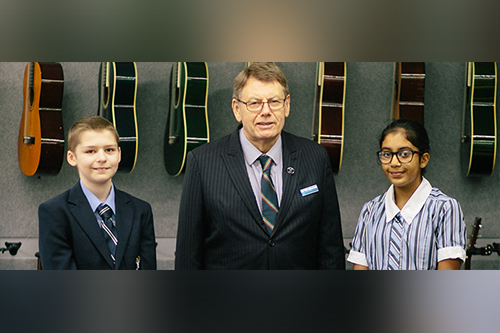
In 2007, Gawura – part of St Andrew’s Cathedral School in Sydney— was established in response to systemic underachievement and the clear disparity in educational outcomes of Indigenous and non-Indigenous Australians.
According to the most recent Closing the Gap report, Aboriginal children still trail far behind non-Indigenous children in literacy, numeracy and writing skills.
While some year levels are showing mixed progress, the report found that only two of the seven targets are rated as currently “on track”.
The focus at Gawura, which educates boys and girls from Kindergarten to Year 6 who are of Aboriginal or Torres Strait Islander background, is on the implementation of national strategies to achieve high quality literacy and numeracy outcomes for its students.
So great is the school’s demanding approach to learning that Indigenous students are entering Year 7 on the same academic level as their non-Indigenous peers.
To increase the attendance rate, the school organises a bus to pick the students up every morning from each of their homes and take them to school. As a result, Gawura boasts a student attendance rate of 95%.
While outcomes have been going from strength to strength at the school, the events of 2020 had a significant impact on the school’s teaching and learning community.
“Our Indigenous students did not cope well with remote learning, partly due to a lack of home facilities, but also due to difficulties in supervision by mostly single parents,” the school’s principal, Dr John Collier, told The Educator.
“The school needed to ameliorate that situation by loaning each student a laptop and busing regular work packs to students”.
Dr Collier said the school also prioritised its Gawura students as the first back on site as the school was gradually able to reopen for physical occupation and learning.
“The experience again confirmed the importance of kinship contact for our students,” he said.
“Through 14 years of experience as a specifically Indigenous school, Gawura has learned there are some important ingredients necessary to optimise the experience for students”.
Dr Collier said these ‘ingredients’ include a strong focus on literacy, small classes, employing Indigenous teachers and mentors and partnership with parents, which gives them agency.
“At Gawura, we also teach not only about, but through, Aboriginal culture,” he explained.
“We teach one of the main Indigenous languages as relating to the kinship groups of our students, instilling pride in their Indigeneity, and finding a good balance between a specific focus for our students and some immersion in our larger Junior School”.
Gawura was named Australian School of the Year at the Australian Education Awards 2020 in November.


